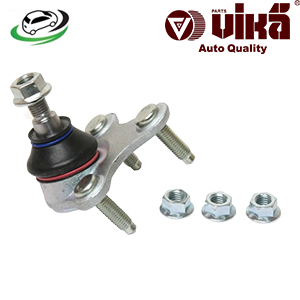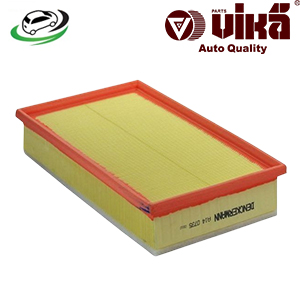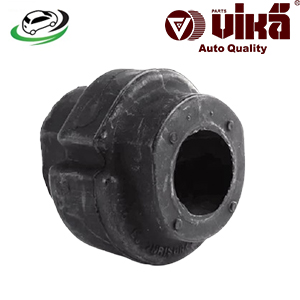-14%
Get Front Sway Bar Bushing Audi A7 C7 3.0 TDI/ B5 A4/ B8 A5/ B8 S4/ B8 S5/ B9 A4/ C7 A6/ C7 S6 / VW Passat B5 4D0411327G
The front sway bar bushing, also known as the anti-roll bar bushing, is a small but crucial component of a vehicle’s suspension system. It plays an important role in stabilizing the vehicle during turns by reducing body roll, which enhances handling and safety. Despite its modest size, the sway bar bushing is essential for the proper functioning of the sway bar (anti-roll bar), helping to ensure a smooth and controlled ride. Understanding the function, construction, signs of wear, and replacement process of the front sway bar bushing is key to maintaining your vehicle’s suspension system.
The Function of the Front Sway Bar Bushing
The front sway bar, also known as the anti-roll bar or stabilizer bar, is a metal rod that connects the left and right wheels through the suspension system. Its primary function is to reduce body roll during cornering by transferring forces from one side of the vehicle to the other, helping to keep the vehicle level. The sway bar bushings are the components that connect the sway bar to the vehicle’s frame or suspension.
The front sway bar bushing performs several vital functions:
- Stabilization of the Sway Bar: The bushing securely holds the sway bar in place while allowing it to rotate and flex as the vehicle moves. This stabilization ensures that the sway bar can effectively reduce body roll without excessive movement that could compromise handling.
- Dampening Vibrations: By providing a cushioned connection between the sway bar and the vehicle’s frame, the bushing absorbs and dampens vibrations. This helps reduce noise and harshness in the ride, contributing to a more comfortable driving experience.
- Reducing Wear on Other Components: The bushing helps to evenly distribute the forces exerted on the sway bar, reducing wear and tear on the sway bar itself and other suspension components. This prolongs the life of the suspension system and maintains its performance.
- Maintaining Proper Alignment: The sway bar bushings help maintain the correct alignment of the sway bar, ensuring that it functions as intended. Proper alignment is crucial for maintaining vehicle stability and handling characteristics.
Construction and Types of Sway Bar Bushings
Sway bar bushings are typically made from materials that offer a balance of flexibility and durability. The most common materials used for sway bar bushings include:
- Rubber Bushings: Traditional sway bar bushings are made of rubber, which provides excellent flexibility and vibration dampening. Rubber bushings are cost-effective and offer a good balance between comfort and performance. However, they are prone to wear and deterioration over time, especially when exposed to heat, oil, and other contaminants.
- Polyurethane Bushings: Polyurethane bushings are a popular upgrade over rubber bushings, especially in performance or off-road vehicles. Polyurethane is more rigid than rubber, offering better resistance to wear and deformation. These bushings provide improved handling and durability but may transmit more vibrations and noise into the cabin.
- Synthetic Elastomer Bushings: Some manufacturers use advanced synthetic elastomers for sway bar bushings, combining the benefits of rubber and polyurethane. These bushings offer excellent durability and resistance to environmental factors while maintaining a good level of comfort and noise reduction.
- Greaseable Bushings: Some sway bar bushings come with grease fittings (zerk fittings) that allow for regular lubrication. Greaseable bushings reduce friction between the bushing and the sway bar, prolonging the life of the bushing and enhancing performance.
How the Sway Bar Bushing Works
The sway bar bushing works by securely holding the sway bar in place while allowing it to flex and rotate as the suspension moves. When the vehicle makes a turn, the sway bar transfers forces from one side of the suspension to the other. The bushings provide a cushioned connection between the sway bar and the vehicle’s frame, allowing the sway bar to function effectively without excessive movement or wear.
Here’s how the sway bar bushing works in detail:
- Holding the Sway Bar in Place: The sway bar is mounted to the vehicle’s frame or suspension components via the bushings. The bushings encircle the sway bar and are clamped in place by brackets, ensuring that the sway bar remains securely attached while still being able to flex and rotate.
- Allowing Controlled Movement: The bushing’s material allows for controlled movement of the sway bar as the suspension moves. This controlled movement is essential for the sway bar to effectively reduce body roll and maintain vehicle stability during turns.
- Absorbing Vibrations and Noise: The bushing material absorbs vibrations and noise generated by the sway bar’s movement, preventing these from being transmitted to the vehicle’s cabin. This helps maintain a smooth and quiet ride, even when driving over rough surfaces.
- Reducing Wear on the Sway Bar: By providing a cushioned interface between the sway bar and the vehicle’s frame, the bushings help reduce wear on the sway bar itself. This prolongs the life of the sway bar and ensures that it continues to function properly.
Signs of a Failing Front Sway Bar Bushing
Over time, sway bar bushings can wear out, degrade, or become damaged due to constant exposure to stress, heat, and contaminants. Recognizing the signs of a failing sway bar bushing is crucial for maintaining the performance and safety of your vehicle:
- Clunking or Rattling Noises: A common symptom of a worn or damaged sway bar bushing is a clunking or rattling noise, especially when driving over bumps or rough surfaces. This noise occurs because the sway bar is no longer securely held in place by the bushing, leading to excessive movement and metal-on-metal contact.
- Excessive Body Roll: If the sway bar bushings are worn out, the sway bar may not be able to effectively reduce body roll during turns. This can lead to a noticeable increase in body roll, making the vehicle feel less stable and reducing handling performance.
- Uneven Tire Wear: Worn sway bar bushings can lead to improper alignment of the suspension components, causing uneven tire wear. This is particularly noticeable on the inside or outside edges of the tires, which may wear more quickly than the rest of the tire.
- Loose or Sloppy Steering: A failing sway bar bushing can cause the steering to feel loose or sloppy, making it difficult to maintain precise control over the vehicle. This is due to the sway bar’s reduced effectiveness in maintaining alignment and stability.
- Visual Inspection: A visual inspection of the sway bar bushings can reveal signs of wear or damage, such as cracks, tears, or deformation of the bushing material. In some cases, the bushing may be visibly deteriorated or missing entirely.
Replacing a Front Sway Bar Bushing
Replacing a worn or damaged front sway bar bushing is a relatively straightforward process, but it is important to do so promptly to avoid further damage to the suspension system. The general steps involved in replacing a front sway bar bushing include:
- Lifting the Vehicle: The vehicle needs to be safely lifted using a jack and supported with jack stands. This allows access to the sway bar and bushings located under the vehicle.
- Locating the Sway Bar Bushings: The sway bar bushings are typically located near the middle of the sway bar, where it is attached to the vehicle’s frame. The bushings are secured in place by metal brackets.
- Removing the Old Bushings: The brackets securing the bushings to the frame are removed, allowing the old bushings to be taken off the sway bar. In some cases, the sway bar may need to be loosened or detached from the end links to remove the bushings.
- Installing the New Bushings: The new bushings are placed onto the sway bar, ensuring that they are properly aligned. The brackets are then reinstalled and tightened to secure the bushings in place.
- Reassembling the Suspension: If any suspension components were detached to access the bushings, they are reattached and properly torqued. The vehicle is then lowered off the jack stands.
- Test Driving the Vehicle: After replacing the sway bar bushings, it’s important to test drive the vehicle to ensure that the new bushings are functioning properly. Listen for any unusual noises and check for improved handling and stability.
Importance of Timely Replacement
Replacing a worn or damaged front sway bar bushing is essential for maintaining the safety and performance of your vehicle. Neglecting this component can lead to several issues:
- Reduced Handling Performance: A failing sway bar bushing can compromise the sway bar’s ability to reduce body roll, leading to diminished handling performance. This can make the vehicle feel less stable and responsive, especially during turns.
- Increased Tire Wear: Worn sway bar bushings can cause misalignment of the suspension components, leading to uneven tire wear. This not only shortens the life of your tires but can also affect the vehicle’s handling and fuel efficiency.
- Potential Damage to Other Components: If a sway bar bushing fails completely, it can cause excessive movement of the sway bar, leading to damage to other suspension components such as the sway bar itself, end links, or control arms. Replacing the bushings promptly can prevent these additional repairs.
- Enhanced Vehicle Safety: Properly functioning sway bar bushings are crucial for maintaining vehicle stability and safety. By replacing worn bushings, you can ensure that your vehicle handles predictably and remains safe to drive.
Follow us on Facebook for more parts.



